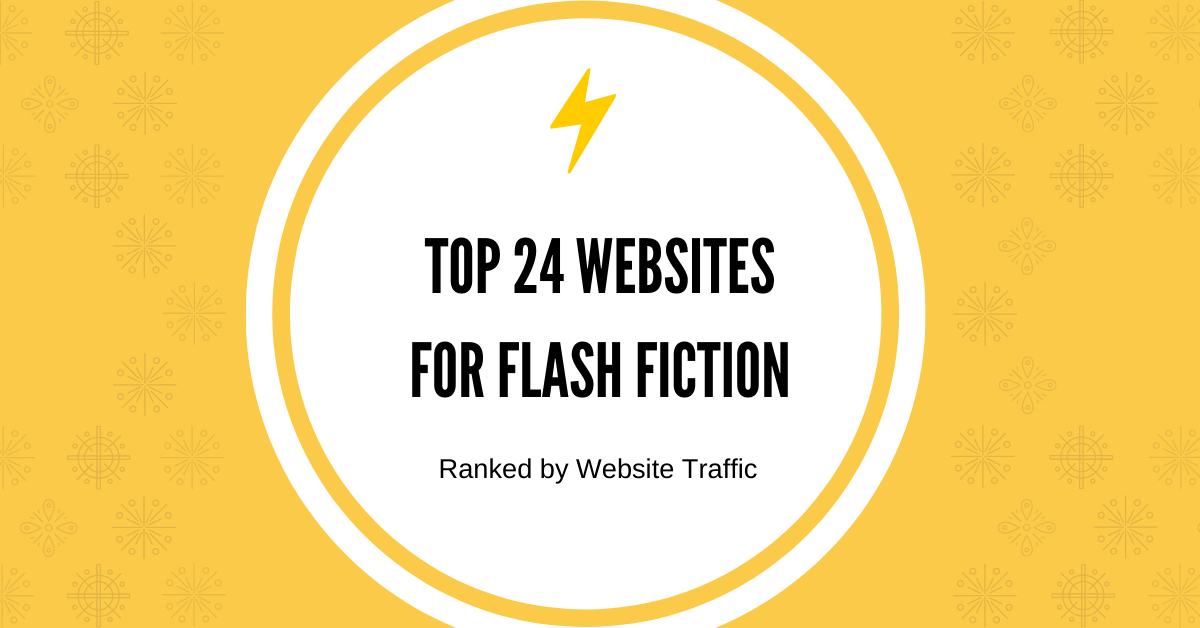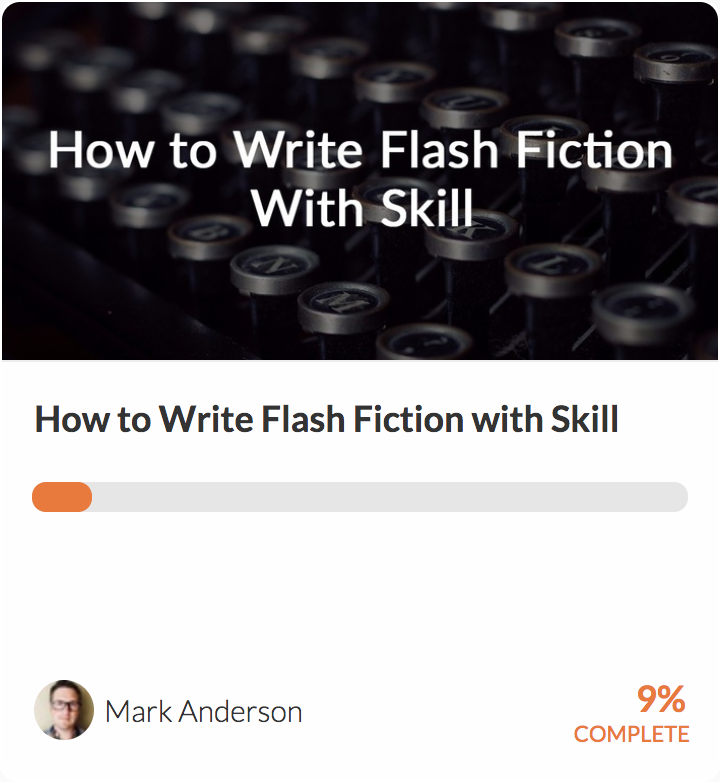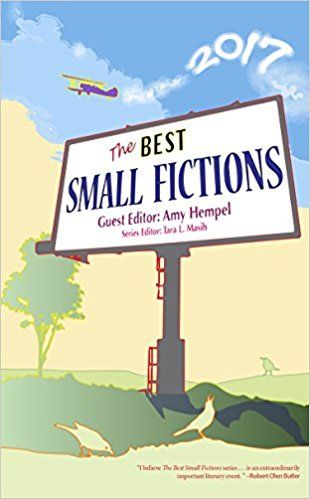 It doesn’t matter what you call it — flash fiction, sudden fiction, micro fiction, short-short — stories under 1000 words offer a quick zing of literary delight.
It doesn’t matter what you call it — flash fiction, sudden fiction, micro fiction, short-short — stories under 1000 words offer a quick zing of literary delight.
But have you ever wondered whether anyone actually read your flash fiction piece you published online? This list gives you a good idea of how many eyeballs it reached by ranking the markets.
I used the analytical program SimilarWeb to estimate the number of monthly visitors each literary journal receives [UPDATED SUMMER 2016], and then I averaged the last three months together.
Does this tell you which is the best magazine? Nope. Does it tell you whether the fiction the journal has published is any good? Nope. Does it tell you whether they have good graphic design, or excellent editorial skills, or whether the magazine will endure? Nope, nope, nope.
This is for curiosity’s sake. Don’t use the list in the wrong way, by pretending this is a judgment on quality.
Also, remember that some of these journals provide other material — longer fiction pieces, nonfiction, interviews — and that some percentage of the visitors might be looking at that rather than the flash fiction. Still, I think this gives you a ballpark of flash fiction and micro fiction readers based on number of visitors.
(if you’re looking for Flash Fiction Competitions, check out my list of the top 17 Flash Fiction contests)
I created this ranking because when I was looking for flash fiction markets (on various websites and on Duotrope), I encountered a huge load of subpar journals. You know the type — jenky formatting, lousy design, old “new” issues, few back issues, etc. I didn’t want to submit to any of them. Or read them, for that matter.
Which made me wonder: in the same way I ranked regular literary journals by using the Best American Short Stories, maybe I could also use a different system to rank some of the best places for Flash Fiction. And so was born the idea of measuring website traffic.
The magazines below are largely literary, but after this list I offer a few bonus ones which should satisfy writers looking for some alternative genres.
Also, many of the literary magazines below publish micro fiction as well as flash fiction. The difference between the two? Micro fiction tends to run under 300 words, while flash fiction is under 1000 words. So micro fiction is even flashier than flash fiction.
I hope you enjoy this list and enjoy reading and submitting to all these journals!
1. 3 AM Magazine – 85,000 visitors monthly
I’d known about 3 AM Magazine since 2009, but I never knew they got so much traffic. Apparently, they’re more than just a cult fascination. In addition to creative work like fiction and poetry, they offer a blog, reviews, interviews, and essays. They’re looking for experimental fiction under 2,500 words.
2. Flash Fiction Online – 35,000 visitors monthly
Flash fiction online has a cool lightening logo and they’ve published an annual anthology for the last three years with dubious graphic design but great content. They’re open to reprint submissions, and what’s more, they’re one of the few to offer pro payment for stories (.06 cents a word). Many of the staff like speculative and sci-fi, and the journal has that focus, but their tastes extend beyond that genre.
3. Word Riot – 25,000 visitors monthly
Word Riot releases a monthly issue with flash fiction and flash nonfiction. They’ve got a great pedigree, having set up shop in 2002, which makes them practically ancient because literary journal years are like dog years. They are looking for pieces under 1000 words.
4. Everyday Fiction – 22,000 visitors monthly
Everyday Fiction is a popular home for flash fiction, with stories of mass appeal published often. What’s most helpful is a list of categories in their sidebar, where you can target the type of stories you prefer to read: humor, horror, sci-fi, literary. They pay a token amount ($3 a story).
5. Brevity – 20,000 visitors monthly
Originally connected with the journal Creative Nonfiction, Brevity has captured the niche of flash nonfiction on the web. Look over the published authors in their bullpen — they have quite a few heavy-hitter names. They’re looking for pieces under 750 words, and they pay $45 for each one.
6. Pank – 16,000 visitors monthly
Founded by the inestimable Roxane Gay, Pank draws in huge crowds. They don’t only publish flash fiction, and there is no maximum amount of words on their website, but their pieces tend to be shorter. Pank also has a publishing arm — Tiny Hardcore Press — and is on my list of Best Online Literary Journals.
7. 100 Word Story – 14,000 visitors monthly
100 words is truly micro fiction. They post photo prompts and publish one winner every month, and also have book reviews, interviews and essays.
8. Smokelong Quarterly – 14,000 visitors monthly
Smokelong Quarterly is more important than these numbers would suggest. Smokelong and NANO fiction were the flash-fiction journals I knew best before I compiled this list. In fact, Smokelong was in competition as the standard name for flash fiction — fiction you can read during the length of a cigarette. It was founded in 2003, and has developed a solid reputation as a premier publisher of flash fiction. They publish fiction under 1000 words.
9. Hobart – 13,000 visitors monthly
Hobart publishes flash fiction and flash nonfiction on a very regular basis — almost every day. They ask for pieces under 2,000 words, although they say that under 1,000 is even better. Hobart has a great reputation, and if you read just a few pieces you get a great sense of their swagger and heart.
10. Drunken Boat – 12,000 visitors monthly
Drunken Boat is looking for pieces that use the “medium of the web as part of its compositional strategy.” Meaning, they like video, sound, animation, and hypertext integrated with language. Ambitious, but they have some amazing work.
11. Flash Fiction Magazine – 11,000 visitors monthly
They really do deliver on their promise to publish a flash fiction piece daily. It’s a great place to get your reading fix. In exchange for signing up for their email list, they send you a free ebook of a whole bunch of flash fiction. No erotica or children’s stories, and if you get published there, you have to wait 2 months to submit again.
12. The Collagist – 10,000 visitors monthly
Matt Bell was the editor here for a number of years, but he’s moved on and now Matthew Olzmann and Gabriel Blackwell edit. It’s a monthly journal published since 2009, originally started as a project of Dzanc books. It’s got great excerpts of forthcoming novels, as well as novellas and flash fiction.
13. Lunch Ticket – 8,000 visitors monthly
Lunch Ticket is published by Antioch University’s MFA program. There’s no stated limit to flash fiction, but normal fiction submissions run under 5,000 words. In addition to flash fiction, they’re looking for translations, YA fiction, and visual art.
14. NANO Fiction – 7,000 visitors monthly
NANO Fiction is another one of those journals you have to know if you travel in flash fiction circles. They publish so many amazing short shorts it’s hard to keep up. They also sponsor the $1000 NANO Prize for fiction under 300 words, pay $20 per accepted piece, and this is their stated aesthetic: “We are looking for work that experiments with form while still balancing narrative.”
15. Fiction Southeast – 4,000 visitors monthly
Not to be confused with Southeast Review, Fiction Southeast has a number of marquee writers like Joyce Carol Oates and Donald Ray Pollock. They are looking for fiction under 1500 words, and also sponsor the Ernest Hemingway Flash Fiction Prize.
 | If you want to become a better flash fiction writer, check out this course with Mark Anderson. Through 28 videos and helpful PDFs, he teaches the best tricks and techniques to become a successful flash fiction writer. |
16. Literary Orphans – 4,000 visitors monthly
Literary Orphans likes to pair photography with writing, or as they say it, building a “collaborative writing and arts platform.” They say 1500 words is their sweet spot and 2000 is their upper limit. They are also launching The Rookery, which is an archive for digital journals in danger of e-death.
17. Monkeybicycle – 4,000 visitors monthly
Monkeybicycle publishes a lot of short-shorts under 2000 words, but they also publish one-sentence stories every Wednesday. They also have a nice backlog of podcasts and columns that are interesting to peruse, in addition to their fiction, nonfiction and interviews.
18. Wigleaf – 4,000 visitors monthly
Wigleaf sponsors the Top 50 Very Short Fictions, which is a lovely place to read fantastic short-shorts and to discover new journals. They are looking for stories under 1000 words and post weekly. They also regularly appear in storySouth’s Million Writers Awards.
19. Vestal Review – 2,000 visitors monthly
Vestal Review brags they’re the longest-running flash magazine in the world. I won’t dare to contest that (they recently celebrate their 15th anniversary) although I’ve noted suspicious claims from literary journals before about age. They hold a Flash Fiction award for the best story under 500 words published anywhere, and the winner receives $100 and re-publication.
20. DecomP – less than 1,000 visitors monthly
DecomP wins a fair amount of awards, including a bunch in the Queen’s Ferry Press “The Best Small Fictions of 2015.” They don’t have a word limit for flash fiction, but regular fiction is limited to 4,000, so it’s probably far below that. They also have a massive database of archived work dating back to 2004.
21. Juked – less than 1,000 visitors monthly
Juke publishes a few short-shorts every couple of weeks, and they’re looking for fiction under 2,500 words. They not only publish online but have print issues, too.
22. Cheap Pop – less than 1,000 visitors monthly
Cheap Pop is new but they got verve. They have a micro-fiction contest under 500 words in any genre, and publish anywhere from four to eight pieces a month.
23. Nanoism – less than 1,000 visitors monthly
I couldn’t find visitor information on Nanoism, but I’m listing it still because I think the idea of Twitter-fiction is great. That’s right — a 140 character limit. They’ve been publishing stories since 2009.
24. New Flash Fiction Review – less than 1,000 visitors monthly
This is a newish flash fiction journal, started in 2014. They have contests, offer mentoring, and publish regular issues.
If you’re looking for a great collection of flash fiction, check out THE BEST SMALL FICTIONS edited by Tara L. Masih:
A Few Bonus Flash Fiction journals:
If you like “dark” fiction (think Twilight Zone), check out Lamplight, which gets about 4,000 visitors monthly.
Doesn’t get enough traffic to register in the rankings, but check out FRiGG Magazine, which publishes two issues annually, and accepts stories under 1000 words.
Superstition Review is published by Arizona State University students, has been since 2008, and solicits flash fiction.
For pieces under 150 words, check out the monthly literary magazine Hoot, featuring postcard-sized writings.
Willow Springs is looking for short-shorts under 750 words, and pays $40.


8 comments
MetaStellar is a new, free science fiction, fantasy and horror magazine that was launched in the fall of 2020.
Since then, it’s published more than 300 stories by 180-plus authors, and we currently get between 1,000 and 5,000 pageviews a month.
Link to site: https://www.metastellar.com/
Hi, I also have blog having flash fictions… I have 2000 monthly visitors… Please could you publicize my blog too?
Hi. Just wanted to say ‘thank you’ for the compilation. Looks like some interesting ones listed.
Great list, but I’m looking for pubs that will use flash fiction works already published on the Internet or in anthology form. I have two (one published in an anthology book) and one on the Internet.
Quite a few of the links are spam-like in nature. Also many are quite dated / closed / non-paying. List needs drastic updating.
Fiction Attic Press publishes new flash fiction every week. We pay $15 per flash fiction, $20 per essay, and $50 for novellas-in-flash. We’ve been publishing flash fiction and essays since 2005. Find us at fictionattic.substack.com or fictionattic.com.
Really amazing article. It’s really helpful. Thanks for sharing.
I don’t know how you selected the people you list, but I hope you’ll add this:
Writer Advice seeks flash fiction (750 words or less). Draw us in. Open our eyes. Dazzle, delight, and entice us. Winners receive cash prizes and are published. Low fee for solid feedback. Deadline: 06/02/24. Details, tiered fees, and cash prizes: https://writeradvice.com/latest-contest-information/.
Thank you!